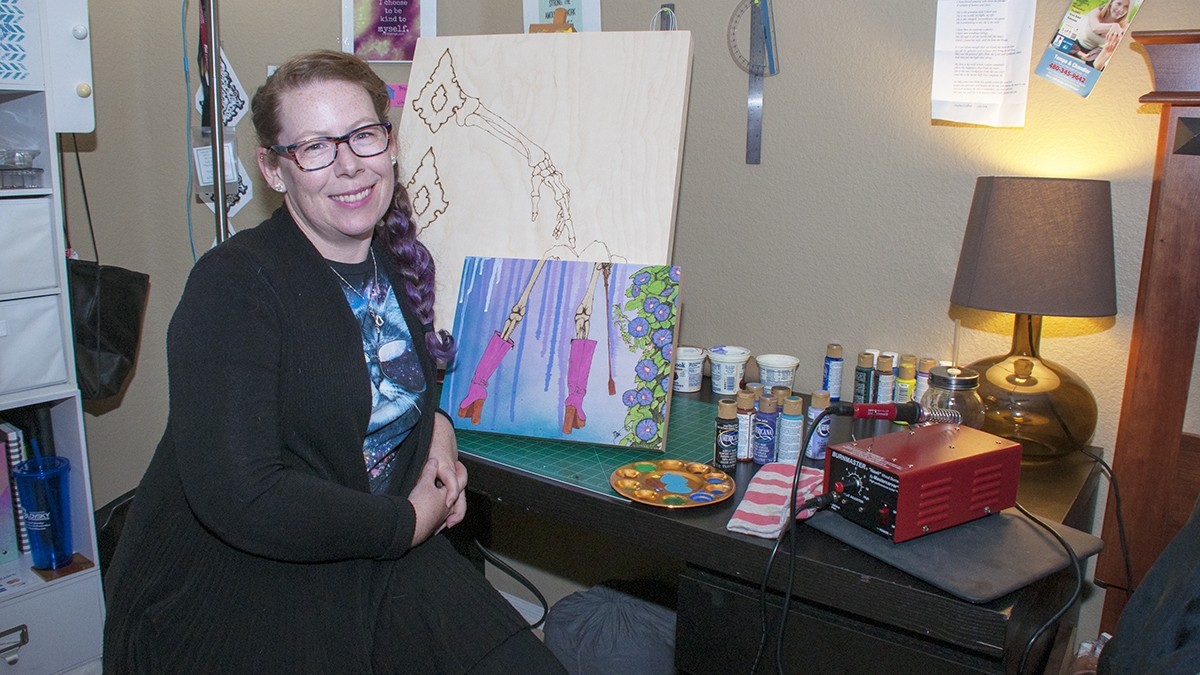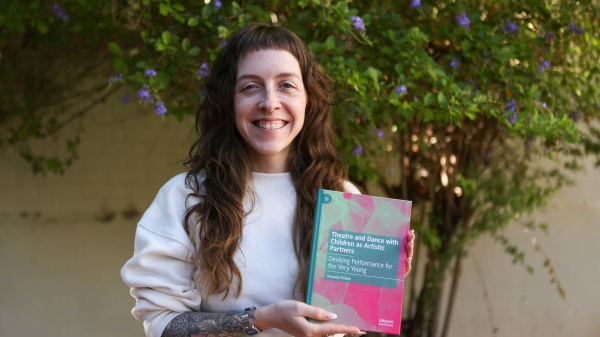ASU therapeutic recreation grad uses art to make a difference

Nikka Brooks-Cullum, the fall 2018 outstanding graduate for the School of Community Resources and Development.
Editor’s note: This is part of a series of profiles for fall 2018 commencement. Read about more graduates.
Nikka Brooks-Cullum is the fall 2018 outstanding graduate for the School of Community Resources and Development in the Watts College of Public Service and Community Solutions at Arizona State University. An Air Force veteran, she earned her associate’s degree from Chandler-Gilbert Community College and is a first-generation college graduate. Brooks-Cullum will receive her bachelor’s degree in Parks and Recreation Management with an emphasis in Therapeutic Recreation.
Financially, it wasn’t easy. She quit her full-time job to focus on her studies.
“At almost forty, I had thought this opportunity might never come, but the decision to finally do it was the best I have ever made,” Brooks-Cullum said. “My husband and I had to give up quite a bit to make this happen, and I am so glad we did.”
A professional artist, Brooks-Cullum originally planned to major in art education. But after serving as a substitute teacher, she found being in a classroom setting would not be true to her calling. Her real passion was using her artistic ability to help people in need. She learned that a degree focusing on therapeutic recreation would allow her to do just that.
“There are so many different ways that recreational therapy can be used, that the therapist's own strengths and interests can really help them decide where they want to go with their practice,” she said.
For Brooks-Cullum, painting was once an escape. She suffered from mental health issues, but the stigma of seeking help prevented her from reaching out.
So, she reached inward.
She expressed her feelings through the stroke of a brush and a dash of color. She painted serene landscapes, flowers, and women in contemplative poses. Sometimes the women had fairy-like wings. What she put on canvas helped Brooks-Cullum find her own inner beauty.
“I just did this one thing I enjoyed doing, over and over until I got good at it, and it helped me cope with stress, anxiety and improved my sense of self-worth,” Brooks-Cullum said. “This personal experience was something I felt others with mental health issues could also benefit from.”
A native of Chino Valley, Arizona, Brook-Cullum joined the Air Force out of high school and soon found herself in a technical career as a vehicle operator/dispatcher. She left military service a few years later as the spouse of an airman. They spent several years living abroad, in Okinawa, Japan and later in Stuttgart, Germany, where she began to sell her paintings.
The flowers, women and landscapes she painted to find beauty within have morphed into a deeper juxtaposition of life and death.
“My current work is also about me, but this time finding an acceptance for the inevitable end of life,” Brooks-Cullum said. “I use flowers to represent the fragility of life and beauty and images of bones to symbolize death. There is such a fine line between the two. We seem strong and vital, but life is delicate as well.”
Brooks-Cullum plans to use her skills as an artist and a certified therapeutic recreation specialist to help an often overlooked population, people who are incarcerated.
“I was surprised by how important the idea of second chance became to me,” she noted. “Two of my career field experience volunteer locations allowed me to get to know people who had at some point in their lives been involved in a crime, and they were either still doing time for it, or were trying to reintegrate back into society.”
In Arizona, 40 percent of those released from prison reoffend within three years. Brooks-Cullum wants to be part of the solution.
“I believe therapeutic recreation has a lot to offer to the field of corrections, and am advocating for Arizona Department of Corrections to offer people who are incarcerated and the newly released more access to services such as recreational therapy to lower the state's high recidivism rate,” Brooks-Cullum said. “I volunteered at the Maricopa Re-entry Center last spring with a classmate and used recreational therapy to remind former inmates there that they are people and deserving of a happy, healthy life, regardless of their past.”
Brooks-Cullum also interned at the Arizona State Forensics Hospital where she had the chance to work with people with severe mental illness and behavioral issues. She saw the difference she made in the lives of people and she’s grateful for the opportunity ASU gave her as a student.
“I think it’s important to find ways to make your assignments have actual meaning to you,” Brooks-Cullum said. “Apply them to a setting or a population that you want to learn about, or help in some way, and you may find that the work becomes more interesting to you, and less like work.”
More Arts, humanities and education

Exhibit to feature artwork inspired by oral histories from Arizona's oldest botanical garden
Though it is Arizona's largest botanical garden and has been an established touchstone of the community for more than 100 years,…

ASU center to host Spike Lee for Delivering Democracy 2025 program
The Center for the Study of Race and Democracy at Arizona State University will host Academy Award-winning filmmaker and cultural…

ASU professor explores theater, dance for young children in new book
Arizona State University Assistant Professor Amanda Pintore believes in the artistic capacity of very young children. She's…